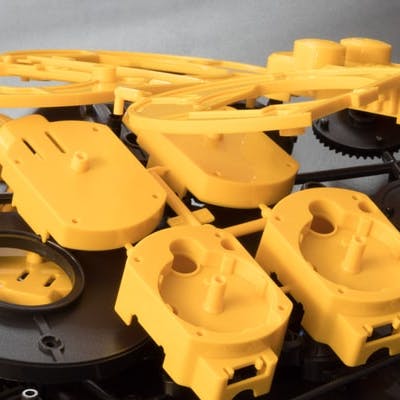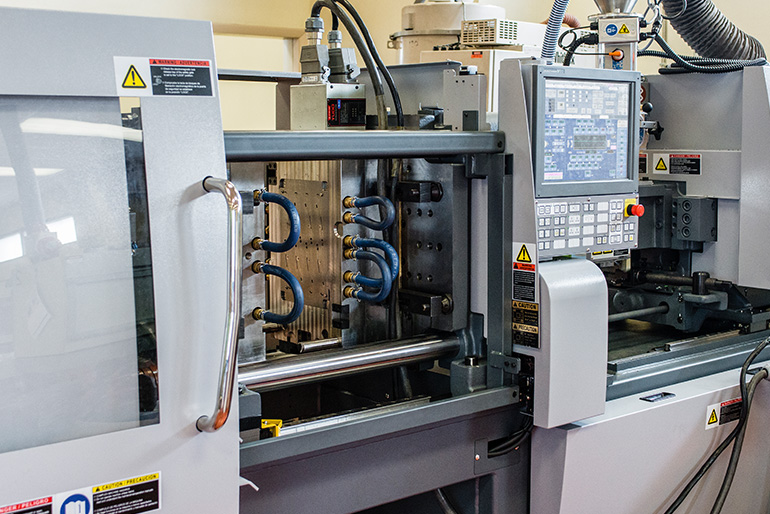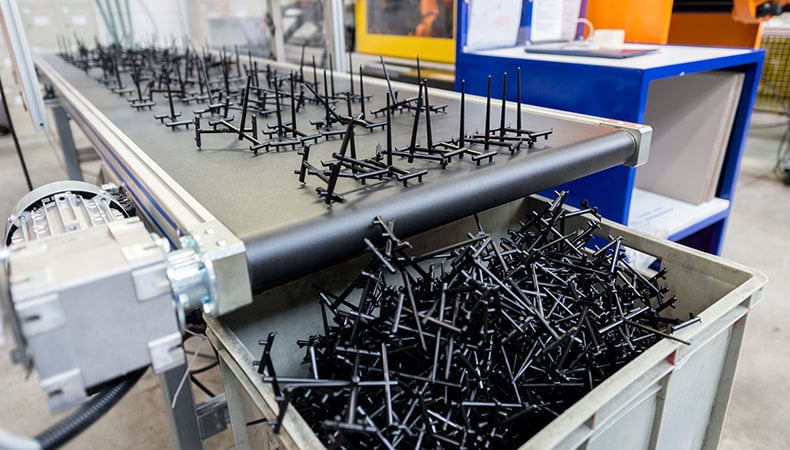The Role of Plastic Injection Molding in Producing Cost-Effective Industrial Parts
The Role of Plastic Injection Molding in Producing Cost-Effective Industrial Parts
Blog Article
Recognizing the Essentials of Plastic Shot Molding Procedures
Plastic shot molding works as a cornerstone of modern production, offering a methodical technique to creating intricate elements with accuracy. This procedure not only incorporates the fundamental steps of melting and injecting materials into mold and mildews yet also entails a nuanced understanding of various influencing factors, such as temperature level and pressure. As markets progressively require efficiency and quality, the complexities of this methodology come to be more vital. Checking out these crucial components can reveal just how even small adjustments can result in substantial enhancements in production end results, questioning about the capacity for advancement in this well-known procedure.
What Is Plastic Shot Molding?
Plastic injection molding is a commonly made use of manufacturing process that changes thermosetting and polycarbonate products right into accurate and intricate shapes. This technique is preferred for its capacity to produce high quantities of similar components with phenomenal accuracy, making it an important method in different sectors, consisting of auto, durable goods, and medical devices.
The procedure involves melting the picked plastic product and infusing it right into a mold and mildew under high pressure. The mold, made to the specifications of the desired part, permits the liquified plastic to form as it cools down and solidifies. As soon as the material has actually set, the mold and mildew is opened, and the finished component is ejected.
Plastic shot molding provides a number of benefits, including minimized waste, consistency in manufacturing, and the capability to include intricate layouts that may be challenging with various other producing approaches. Additionally, it supports a wide variety of products, each giving one-of-a-kind homes that can be customized for particular applications. As industries continue to introduce, plastic shot molding stays at the forefront, enabling the growth of advanced items that satisfy evolving consumer needs.
The Shot Molding Refine
The shot molding process is a sophisticated method that includes numerous essential stages to create top quality plastic elements. Initially, plastic pellets are fed right into a warmed barrel where they are thawed into a viscous fluid. This molten plastic is after that infused under high pressure into a precision-engineered mold and mildew, which forms the product right into the desired type.
When the mold and mildew is filled up, the plastic is allowed to strengthen and cool down, taking the shape of the mold and mildew cavity. Air conditioning time is crucial, as it impacts the cycle time and the final homes of the molded part. After sufficient cooling, the mold opens up, and the finished component is expelled making use of ejector pins.

Products Utilized in Shot Molding
Various materials can be made use of in the injection molding procedure, each offering unique buildings that deal with particular applications. The most typically used materials consist of thermoplastics, thermosetting plastics, and elastomers.

Thermosetting plastics, like epoxy and phenolic resins, go through a chemical change during the curing procedure, leading to a stiff, stringent framework. These materials are ideal for applications calling for high warm resistance and architectural stability, frequently used in electrical insulators and automobile components.
Elastomers, consisting of silicone and rubber-based materials, provide flexibility and strength. Their one-of-a-kind homes make them appropriate for applications that require flexibility, such as seals and gaskets.
Furthermore, specialty products like bio-based plastics and compounds are gaining traction for their environmental advantages and boosted performance characteristics, expanding the range of shot molding applications in numerous markets. Recognizing the homes of these products is vital for picking the proper kind for certain jobs.
Benefits of Injection Molding
Shot molding stands apart as a highly reliable manufacturing procedure that uses anonymous various advantages for generating intricate components with accuracy. One of the most considerable benefits is the capability to develop detailed layouts that would certainly be difficult or tough to accomplish with various other approaches (Plastic Injection Molding). The process enables for in-depth attributes and tight resistances, ensuring top quality parts
In addition, shot molding is known for its quick manufacturing abilities, making it a suitable option for high-volume manufacturing. Once the mold and mildew is produced, parts can be generated promptly, decreasing preparations and boosting general productivity. This Check This Out efficiency not only decreases production expenses but likewise offers an one-upmanship on the market.
The convenience of products used in injection molding better improves its allure. A variety of thermoplastics and thermosetting polymers can be utilized, permitting manufacturers to select products that finest satisfy their certain needs, consisting of strength, versatility, and warmth resistance.
In addition, the process decreases waste, as excess product can typically be reused and recycled. This sustainability aspect contributes to a decreased environmental effect, making shot molding a responsible production selection. Overall, the advantages of injection molding make it a favored technique for many industries.
Elements Impacting Product Quality
While various factors can affect item high quality in injection molding, understanding these elements is essential for accomplishing ideal outcomes. Trick elements include material choice, processing parameters, and mold and mildew style.
Material selection plays an important function, as different polymers show one-of-a-kind buildings that impact flowability, strength, and thermal security. Poor product choice can result in defects such as warping or insufficient filling.
Handling parameters, consisting of cycle, pressure, and temperature level time, must be diligently regulated. Variants in these setups can result in variances in part dimensions and surface area coating. For circumstances, excessively heats may create degradation of the polymer, while poor stress can lead to brief shots.
Mold and mildew style is just as important, learn this here now as it identifies the circulation of the molten plastic and the cooling procedure. Inadequately designed molds might bring about irregular air conditioning prices, resulting in dimensional errors and recurring stresses.

Conclusion
In final thought, plastic shot molding acts as a crucial manufacturing procedure that enables the efficient manufacturing of high-grade parts. Mastery of the shot molding procedure, including the understanding of materials and the influence of numerous aspects on product top quality, is crucial for accomplishing optimal outcomes. The benefits of this approach, such as cost-effectiveness and style adaptability, additional underscore its relevance across multiple industries, solidifying its standing as a recommended selection for high-volume manufacturing.
Plastic injection molding serves as a foundation of contemporary production, supplying a methodical approach to producing intricate parts with accuracy.Plastic shot molding provides several benefits, consisting of lowered waste, consistency in production, and the capacity to integrate detailed designs that might be challenging with various other making methods (Plastic Injection Molding). As markets proceed to introduce, plastic injection molding continues to be at the center, enabling the development of advanced products that fulfill evolving consumer needs
The injection molding process is an innovative strategy that entails several key stages to produce high-grade plastic elements.In final thought, plastic injection molding offers as a crucial manufacturing procedure that makes it possible for the effective manufacturing of top quality parts.
Report this page